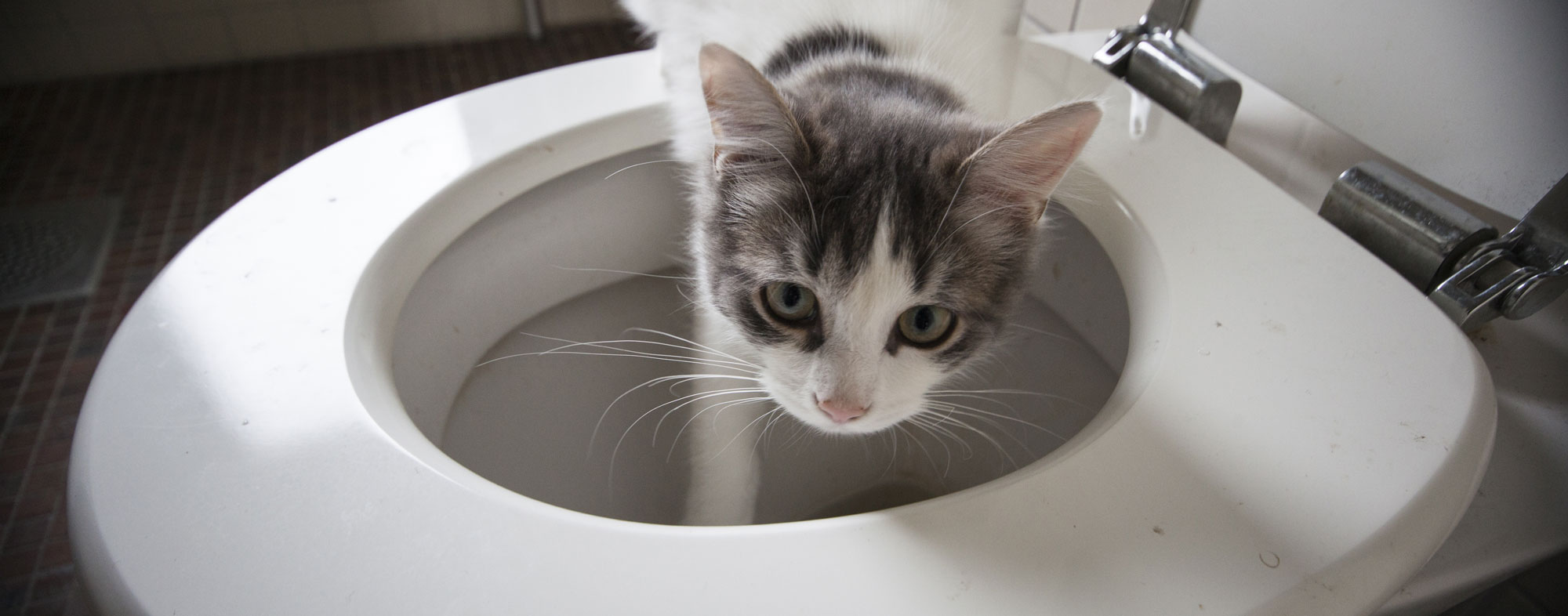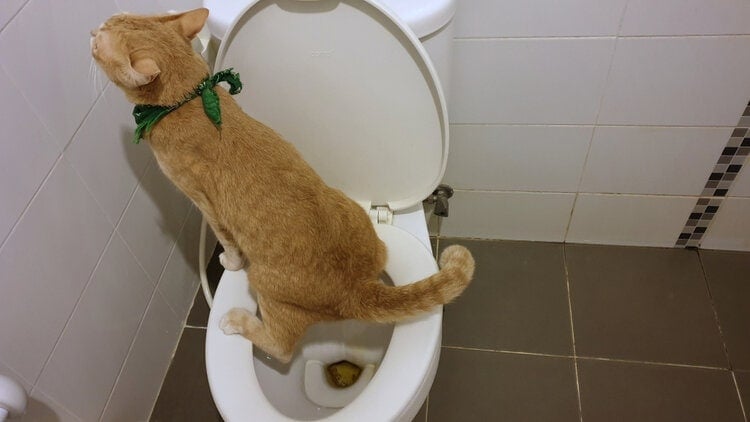When You Must Never Get rid of Animal Waste Down the Toilet
When You Must Never Get rid of Animal Waste Down the Toilet
Blog Article
Were you on the lookout for critical info on Why you should never flush dog poop down the toilet?

When it involves taking care of waste, specifically animal waste, many people usually resort to the practical choice of flushing it down the commode. Nonetheless, this seemingly very easy solution can have severe consequences for the setting and public health. In this post, we'll discover why flushing animal waste down the bathroom is a negative idea and provide alternate approaches for correct disposal.
Introduction
Proper garbage disposal is critical for keeping ecological sustainability and public health. While it may seem harmless to flush animal waste down the toilet, it can cause numerous concerns, both for the environment and human well-being.
Dangers of flushing pet waste
Environmental effect
Flushing pet waste introduces hazardous bacteria and pathogens right into waterways, which can adversely impact water communities. These virus can pollute water resources and harm marine life, disrupting delicate environments.
Public health worries
Pet waste has unsafe bacteria such as E. coli and Salmonella, which can present major health threats to humans. Flushing pet waste down the commode can infect water products, resulting in the spread of illness and infections.
Alternatives to flushing
Instead of flushing animal waste down the commode, there are numerous alternative disposal techniques that are much more environmentally friendly and hygienic.
Composting
Composting pet waste is an eco-friendly method to dispose of it. By composting, raw material is broken down right into nutrient-rich soil, which can be made use of to fertilize gardens and plants.
Land fill disposal
Disposing of pet waste in a landfill is one more alternative. While not as environmentally friendly as composting, it is a more secure option to flushing, as it prevents the contamination of water sources.
Family pet garbage disposal systems
There are customized pet dog garbage disposal systems readily available that securely and hygienically get rid of pet waste. These systems frequently make use of enzymes to break down waste and eliminate odors.
Steps to proper animal garbage disposal
To guarantee appropriate disposal of animal waste, comply with these steps:
Scooping and landing waste
Regularly scoop and bag pet waste making use of eco-friendly bags. This prevents waste from infecting the atmosphere.
Using marked waste containers
Dispose of bagged animal waste in assigned waste bins, such as garden compost bins or landfill containers. Avoid flushing it down the commode in all prices.
Cleansing litter boxes and pet locations routinely
Regularly tidy litter boxes and pet dog areas to avoid the buildup of waste and germs. Usage pet-safe cleaning items to keep hygiene.
Benefits of appropriate disposal methods
Taking on correct disposal methods for animal waste uses a number of advantages:
Lowered environmental pollution
Appropriate disposal techniques reduce the danger of environmental pollution, shielding waterways and ecological communities from contamination
Reduced danger of water contamination.
By avoiding flushing animal waste down the commode, the risk of water contamination is substantially reduced, securing public health.
Boosted cleanliness and hygiene
Proper disposal techniques advertise far better cleanliness and health, developing a more secure setting for both people and pets.
Final thought
Finally, flushing pet waste down the toilet is unsafe to the environment and public health. By taking on get more info different disposal approaches and adhering to appropriate waste monitoring methods, we can lessen the unfavorable impact of animal waste and add to a cleaner, much healthier world.
Why You Should Never Flush Cat Poop Down the Toilet
A rose by any other name might smell as sweet, but not all poop is created equal. Toilets, and our sewage systems, are designed for human excrement, not animal waste. It might seem like it couldn’t hurt to toss cat feces into the loo, but it’s not a good idea to flush cat poop in the toilet.
First and foremost, assuming your cat uses a litter box, any waste is going to have litter on it. And even the smallest amount of litter can wreak havoc on plumbing.
Over time, small amounts build up, filling up your septic system. Most litter sold today is clumping; it is made from a type of clay that hardens when it gets wet. Ever tried to scrape old clumps from the bottom of a litter box? You know just how cement-hard it can get!
Now imagine just a small clump of that stuck in your pipes. A simple de-clogger like Drano isn’t going to cut it. And that means it’s going to cost you big time to fix it.
For an amusing, graphic tale of what happens when you flush too much litter down the toilet all at once, take a few minutes to read Gene Weingarten’s 2017 Washington Post column “So that’s what happens when you flush cat litter down the toilet.”
Parasitic Contamination
Believe it or not, your healthy kitty may be harboring a nasty parasite. Only cats excrete Toxoplasma in their feces. Yet it rarely causes serious health issues in the cats that are infected. Most people will be fine too if infected. Only pregnant women and people with compromised immune systems are at risk. (If you’ve ever heard how women who are expecting are excused from litter cleaning duty, Toxoplasma is why.)
But other animals may have a problem if infected with the parasite. And human water treatment systems aren’t designed to handle it. As a result, the systems don’t remove the parasite before discharging wastewater into local waterways. Fish, shellfish, and other marine life — otters in particular — are susceptible to toxoplasma. If exposed, most will end up with brain damage and many will die.
Depending on the species of fish, they may end up on someone’s fish hook and, ultimately on someone’s dinner plate. If that someone has a chronic illness, they’re at risk.
Skip the Toilet Training
We know there are folks out there who like to toilet train their cats. And we give them props, it takes a lot of work. But thanks to the toxoplasma, it’s not a good idea.
Leave the toilet to the humans, and accept your future litter cleaning duty.

Regularly tidy litter boxes and pet dog areas to avoid the buildup of waste and germs. Usage pet-safe cleaning items to keep hygiene.
Benefits of appropriate disposal methods
Taking on correct disposal methods for animal waste uses a number of advantages:
Lowered environmental pollution
Appropriate disposal techniques reduce the danger of environmental pollution, shielding waterways and ecological communities from contamination
Reduced danger of water contamination.
By avoiding flushing animal waste down the commode, the risk of water contamination is substantially reduced, securing public health.
Boosted cleanliness and hygiene
Proper disposal techniques advertise far better cleanliness and health, developing a more secure setting for both people and pets.
Final thought
Finally, flushing pet waste down the toilet is unsafe to the environment and public health. By taking on get more info different disposal approaches and adhering to appropriate waste monitoring methods, we can lessen the unfavorable impact of animal waste and add to a cleaner, much healthier world.
Why You Should Never Flush Cat Poop Down the Toilet
A rose by any other name might smell as sweet, but not all poop is created equal. Toilets, and our sewage systems, are designed for human excrement, not animal waste. It might seem like it couldn’t hurt to toss cat feces into the loo, but it’s not a good idea to flush cat poop in the toilet.
First and foremost, assuming your cat uses a litter box, any waste is going to have litter on it. And even the smallest amount of litter can wreak havoc on plumbing.
Over time, small amounts build up, filling up your septic system. Most litter sold today is clumping; it is made from a type of clay that hardens when it gets wet. Ever tried to scrape old clumps from the bottom of a litter box? You know just how cement-hard it can get!
Now imagine just a small clump of that stuck in your pipes. A simple de-clogger like Drano isn’t going to cut it. And that means it’s going to cost you big time to fix it.
For an amusing, graphic tale of what happens when you flush too much litter down the toilet all at once, take a few minutes to read Gene Weingarten’s 2017 Washington Post column “So that’s what happens when you flush cat litter down the toilet.”
Parasitic Contamination
Believe it or not, your healthy kitty may be harboring a nasty parasite. Only cats excrete Toxoplasma in their feces. Yet it rarely causes serious health issues in the cats that are infected. Most people will be fine too if infected. Only pregnant women and people with compromised immune systems are at risk. (If you’ve ever heard how women who are expecting are excused from litter cleaning duty, Toxoplasma is why.)
But other animals may have a problem if infected with the parasite. And human water treatment systems aren’t designed to handle it. As a result, the systems don’t remove the parasite before discharging wastewater into local waterways. Fish, shellfish, and other marine life — otters in particular — are susceptible to toxoplasma. If exposed, most will end up with brain damage and many will die.
Depending on the species of fish, they may end up on someone’s fish hook and, ultimately on someone’s dinner plate. If that someone has a chronic illness, they’re at risk.
Skip the Toilet Training
We know there are folks out there who like to toilet train their cats. And we give them props, it takes a lot of work. But thanks to the toxoplasma, it’s not a good idea.
Leave the toilet to the humans, and accept your future litter cleaning duty.

Hopefully you enjoyed reading our topic on 4 Reasons Why Dog Poop Cleanup is Important. Many thanks for taking a few minutes to read through our article post. Sharing is caring. One never knows, you will be helping someone out. Thank you for your time invested reading it.
Get A Quote Report this page